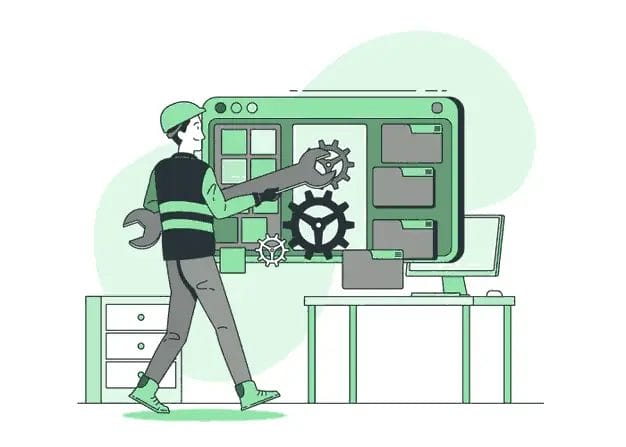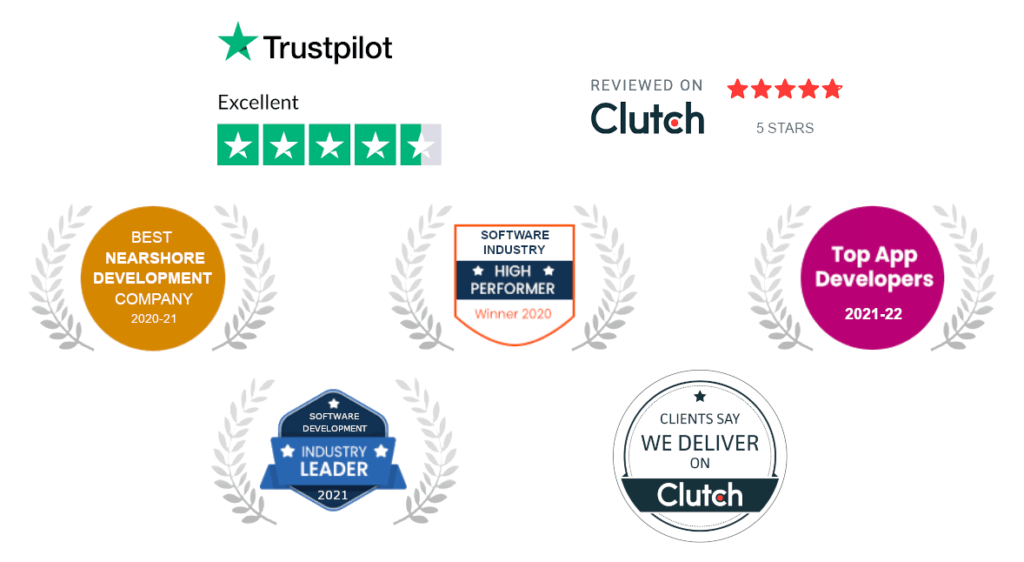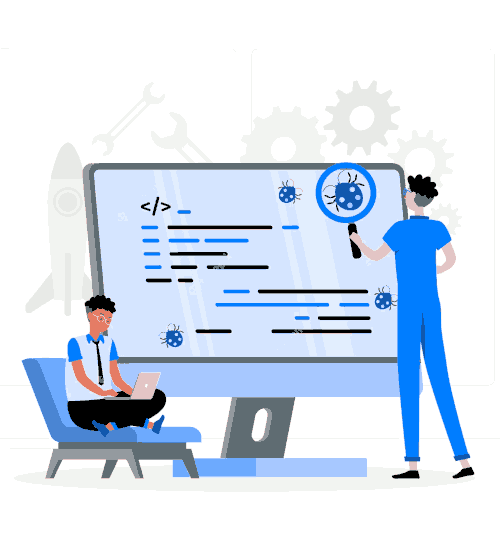We Help You Hire a Manual QA From South America

The process of hiring a Manual QA from a nearshore company can often be confusing and time-consuming. You want a Manual QA with verified skills and experience who is smart, reliable, and hardworking.
Your organization can find the perfect fit for your development project using a custom AI matching algorithm. We ensure an excellent match for your team by combining data and personal interviews.
You can hire a Manual QA from our team who will contribute quality tests immediately. We have refined our hiring process over the years, and many fast-growing startups trust it. Our Manual QA Engineers are experts in their field, so hire yours with QATPro and add an expert to your team.
US Working Hours
We have Brazilian Manual QAs who are able to work US hours so they can communicate and work well with your existing team.
Rates from LATAM
It has been a pleasure to bring together a wonderful group of Manual QA Engineers from Latin America who are eager to work with businesses in the United States.
One Simple Payment
You pay a flat monthly or hourly rate, and we take care of all employment taxes and employee benefits.
Vetted Manual QAs Only
It is our guarantee that when you hire a Manual QA Engineer with us, you are hiring a skilled professional who has passed our vetting and examination process.
Testimonials



What is Manual QA?

Manual QA, also known as manual testing, is a software testing approach where testing activities are performed manually by human testers without the use of automation tools or scripts. Manual QA involves the execution of test cases, identification of defects, and validation of software functionality, user experience, and performance. It is a fundamental and widely used testing technique in the software development lifecycle. Here are three headings to provide a brief overview of manual QA:
Test Case Design and Execution
In manual QA, testers design and execute test cases based on functional requirements, user stories, or test scenarios. Testers perform actions on the software application, input data, and compare the actual results with the expected outcomes. They follow predefined test scripts or explore the application to identify defects, inconsistencies, or deviations from expected behavior.
Defect Reporting and Tracking
Manual QA testers play a crucial role in defect identification, reporting, and tracking. They meticulously document identified defects, providing clear steps to reproduce the issues and relevant information for developers to investigate and fix the problems. Testers collaborate with developers and stakeholders to ensure an accurate understanding and resolution of reported defects.
Exploratory Testing and User Experience Evaluation
Manual QA involves exploratory testing, where testers explore the software application to identify defects, usability issues, and inconsistencies that may not be covered by predefined test cases. Testers evaluate the application from an end-user perspective, considering factors such as user interface, intuitiveness, responsiveness, and overall user experience. Their feedback helps improve the quality and usability of the software.
Manual QA Remains Essential
Manual QA remains essential despite the rise of automation testing since it allows testers to apply human judgment, creativity, and domain knowledge to uncover intricate defects and assess user experience comprehensively. It is particularly valuable for small-scale projects, user interface validation, ad-hoc testing, and scenarios that are challenging to automate.

What are the best Manual QA Testing Tools?
Manual QA testing tools play a crucial role in enhancing the efficiency, accuracy, and collaboration of manual testing processes. These tools assist testers in planning, executing, and managing their testing efforts. While the choice of tools depends on specific project requirements and team preferences, here are three popular manual QA testing tools:

TestRail
TestRail is a widely-used test management tool that empowers manual QA testers to effectively manage their testing activities. It allows testers to create, organize, and execute test cases, track test results, and generate comprehensive reports. TestRail promotes collaboration by facilitating test case sharing, assigning tasks to team members, and providing real-time insights into testing progress.

JIRA
JIRA, an industry-leading issue tracking and project management tool, is also utilized for manual QA testing. It enables testers to log and track defects, assign them to developers, and monitor their resolution status. JIRA offers customizable workflows, dashboards, and reporting features, streamlining defect management and enhancing collaboration among team members.

Bugzilla
Bugzilla is an open-source bug tracking tool widely employed in manual QA testing. It allows testers to report, track, and manage defects encountered during testing. With Bugzilla, testers can categorize and prioritize issues, assign them to developers, and track their resolution. Bugzilla facilitates effective communication and collaboration between testers and developers throughout the defect management process.
While these three tools have gained popularity, the selection of a manual QA testing tool should be based on the specific requirements of the project, the team’s workflow, and the desired features and functionalities. It is important to evaluate and choose the tool that best fits the needs of the testing team and aligns with the project’s goals.

Maria Silva
Manual QA
8+ Years of QA 7+ Years of Manual Testing.

Francisco de Oliveira
Manual QA
11+ Years of QA 11+ Years of Manual Testing

Paulo de Souza
Manual QA
10+ Years of QA 10+ Years of Manual QA
What does a Manual QA do?
In the realm of software testing, manual QA (Quality Assurance) professionals play a critical role in ensuring the quality and reliability of software applications. Manual QA testers perform various tasks throughout the software development lifecycle, focusing on validating functionality, identifying defects, and improving the user experience. Here are three headers that highlight the responsibilities of a Manual QA professional:
Test Planning and Execution
Manual QA testers are involved in test planning, where they collaborate with stakeholders to understand project requirements, define test objectives, and develop test strategies. They create test plans and test cases, specifying the steps to be executed, expected outcomes, and acceptance criteria. Manual QA testers meticulously execute test cases, record observations, and compare actual results against expected results. They conduct functional testing, regression testing, user acceptance testing (UAT), and other test types as required.

Defect Identification and Reporting
A vital aspect of a Manual QA’s job is identifying and documenting defects. Testers thoroughly explore the software application, actively searching for issues such as functional glitches, usability problems, and inconsistencies. They meticulously document identified defects, including clear and reproducible steps to reproduce the issues. Testers report defects to developers, using bug-tracking tools or designated defect management systems, ensuring accurate communication and tracking of issues throughout the software development lifecycle.
Collaboration and Communication
Effective collaboration and communication are integral to a Manual QA’s role. Testers work closely with developers, product managers, and other team members to clarify requirements, understand design considerations, and address potential gaps. They actively participate in meetings, providing valuable input and insights from a testing perspective. Manual QA testers also communicate test progress, results, and potential risks to stakeholders, ensuring transparency and facilitating informed decision-making.
Manual QA testers are responsible for test planning and execution, defect identification and reporting, and fostering collaboration and communication within their teams. Their efforts contribute to ensuring the delivery of high-quality software applications that meet user requirements and expectations.

Proven Testing Partner
As testing engineers, we understand the importance of a reliable and high-performing test partner. To meet each customer’s needs, we provide a premium service. Send us a message now to get started with your testing team!
How to Hire a Manual QA with us?
Our Manual QAs can be hired in three easy steps:
If you would like to send your requirements to us, please click the box below, fill out your requirements, click send, and send it by email.
Resumes are received and Manual QAs are interviewed. Shortlist the professionals you want to interview once proposals start arriving.
During your requirement description, you will find out what the scope of your work is and what kind of Manual QA you require.
If you want a detailed response, include the following:
The scope of work includes website design, API development, and big data analytics.
The length of the project should be indicated in your job listing.
Industry experience requirements, like finance, should be mentioned here.
In the billing section, indicate whether hourly rates or monthly contracts are more suitable for you.
How much does it cost to Hire a Manual QA?
The cost of a project is influenced by expert knowledge, experience, location, and market conditions.
As a Manual QA acquires more experience, he or she will also be able to deliver better results, work faster, and have a greater understanding of the industry.
Those who have less experience may be priced more competitively
The following hourly rates are available for Manual QAs in South America:
Junior
Prices From- Works to U.S time zones
- No Recruitment Fees
- Vetted Skills & Experience
- Fulltime Working for you
- No Unreliable Freelancers
Intermediate
Prices From- Works to U.S time zones
- No Recruitment Fees
- Vetted Skills & Experience
- Fulltime Working for you
- No Unreliable Freelancers
Senior
Prices From- Works to U.S time zones
- No Recruitment Fees
- Vetted Skills & Experience
- Fulltime Working for you
- No Unreliable Freelancers
We’re supplying Manual QAs from South America!
The cost of Engineers may vary slightly depending on the requirements for skill and experience and availability.
It’s up to you to decide which one is the best one for your project based on the specifics.
What kind of tests does a Manual QA write?
Manual QA testers write various types of tests to ensure the quality and functionality of software applications. Here are some examples of the types of tests commonly written by Manual QA professionals:
Functional Tests
- Functional tests validate whether the software application functions correctly according to the specified requirements. Examples include:
- Testing login functionality by verifying that users can successfully log in with valid credentials.
- Verifying that the search feature returns accurate results based on input criteria.
- Testing form validation by entering both valid and invalid data to ensure proper error handling.
Usability Tests
- Usability tests evaluate the user-friendliness and intuitiveness of the software application. Examples include:
- Conducting user walkthroughs to ensure that the application is easy to navigate and understand.
- Verifying that user interface elements are appropriately labeled and aligned.
- Testing the responsiveness of the application to user interactions and input.
User Acceptance Tests (UAT)
- UAT involves testing the software application with end-users to ensure that it meets their requirements and expectations. Examples include:
- Involving actual users in testing and gathering their feedback on the application’s usability and functionality.
- Validating that the application meets specific business requirements and use cases provided by stakeholders.
- Conducting real-world scenario testing to ensure the application performs as expected in typical user workflows.
Compatibility Tests
- Compatibility tests validate that the software application works seamlessly across different platforms, devices, and configurations. Examples include:
- Testing the application on different web browsers (e.g., Chrome, Firefox, Safari) to ensure consistent functionality.
- Verifying compatibility with different operating systems (e.g., Windows, macOS, iOS, Android) and their respective versions.
- Testing the application’s responsiveness and layout on different screen sizes and resolutions.
Manual QA testers write these tests to assess different aspects of the software application, ensuring its functionality, usability, compatibility, and meeting the requirements of end-users and stakeholders.
Interview Questions to ask a Manual QA before you hire them
Can you explain the process you follow when creating test cases?
This question assesses the candidate’s understanding of the test case creation process. Look for their ability to articulate the steps involved, including requirements analysis, test case design, test coverage, and test case documentation. A strong candidate will demonstrate a structured approach to test case creation, considering both positive and negative scenarios, input validation, and boundary conditions.
How do you prioritize and manage your testing activities when faced with tight deadlines?
This question evaluates the candidate’s prioritization and time management skills, essential for effective manual QA testing. Look for their ability to discuss strategies for identifying critical test cases, managing dependencies, and allocating time based on risk analysis. A competent candidate will emphasize the importance of efficient test case selection, focusing on high-risk areas, and collaborating with stakeholders to prioritize testing efforts effectively.

How do you handle communication and collaboration with developers when reporting defects?
Explanation: This question examines the candidate’s interpersonal and communication skills, crucial for successful collaboration between manual QA testers and developers. Look for their understanding of the importance of clear and concise defect reporting, including steps to reproduce and relevant information. A strong candidate will emphasize the need for effective communication, mutual respect, and collaboration to ensure efficient defect resolution and minimize rework.

Do you like to test as part of a team? or do you prefer to test alone?
This question can be answered in any way, so there is no right or wrong answer. If you are looking to hire a manual QA engineer, you may need to hire one who is hardworking and independent. On the other hand, you might want someone who is good at working with others and not stubborn.
Can you describe your approach to regression testing and maintaining test suites?
Explanation: This question assesses the candidate’s understanding of regression testing, a critical aspect of manual QA testing. Look for their knowledge of regression testing strategies, such as prioritizing test cases based on risk, identifying impacted areas after changes, and maintaining regression test suites. A competent candidate will emphasize the importance of retesting critical functionalities, leveraging automation where applicable, and regularly updating and optimizing test suites to ensure efficient regression testing.
A Brief History of Manual QA

Manual QA (Quality Assurance) has been an integral part of software testing since the early days of software development. It involves the manual execution of tests by human testers to ensure the quality and functionality of software applications. Here is a brief history of Manual QA:
Early Manual Testing: In the early days of software development, manual testing was the primary method employed to validate software functionality. Testers would manually execute test cases, often written on paper, to identify bugs and ensure the software met the intended requirements. This manual approach required meticulous attention to detail and thorough documentation of testing activities.
Evolution with Formalized Processes: As software development practices evolved and became more structured, manual QA testing processes became more formalized. Testers began following defined test processes, such as test case design, test execution, and defect reporting. Test management tools emerged to assist in test case organization, execution tracking, and defect management.
Integration with Automation: With the rise of automation testing tools and frameworks, the role of manual QA evolved to complement automation efforts. Testers started leveraging automation tools for repetitive and time-consuming tasks, allowing them to focus on exploratory testing, usability testing, and user acceptance testing. Manual QA testers played a crucial role in designing, executing, and maintaining automated test scripts, as well as analyzing and reporting the results.
Throughout its history, manual QA has remained a vital component of software testing. It offers the advantage of human judgment, intuition, and adaptability to explore complex scenarios and ensure a positive user experience. While automation testing has gained prominence, manual QA continues to be valuable in areas such as usability testing, ad-hoc testing, and scenarios that require human intelligence and creativity.
Why we are a great choice to hire Manual QA with?
With years of experience providing Nearshore Technology Solutions, we offer high quality QA Engineers at competitive prices. We offer scalable, high-performance solutions to our clients.
The expertise we possess in testing and project management allows us to save or rescue development projects. With every project we develop, we strive to create lasting value.
Over a hundred startups and tech companies across the world have trusted us to match skilled QA Engineers with great teams.
With our Manual QAs on your team, you can count on them to become dedicated team members, fully integrated into your operations.
To ensure the quality of our Manual QAs, we conduct a thorough vetting process to determine their communication abilities, remote work readiness, and technical skills (both in QA and Manual Testing, as well as development in general).
Better Prices
Usually, companies outsource to reduce costs. A manual QA engineer hired from outside the United States will cost less. You will also be able to significantly reduce overall employment costs. No US or European employment taxes, benefits, or redundancy liabilities will apply.
Scaling Advantage
It is possible for any industry to gain a competitive advantage through quick expansion and downsizing. The benefits of outsourcing Brazilian Manual QA Engineers to us are that your business can scale up or down as needed.
Experience in Development
Outsourcing software testing gives you access to a company with extensive experience in helping businesses succeed. Therefore, you can be confident that your application will be tested on time and on budget.
What do Manual QAs test?
Manual QAs test various types of systems to ensure their quality. One type is desktop applications, which are installed and run on individual computers. Manual QAs test the functionality, usability, and compatibility of these applications. Web applications, another type, are accessed through browsers and require testing for cross-browser compatibility, responsive design, and user interface elements. Mobile applications, designed for smartphones and tablets, undergo testing for device compatibility, usability, and performance on different platforms.
Manual QAs also test client-server systems, where a client application interacts with a server to exchange data and perform tasks. These systems require validation of communication protocols, data integrity, and security. Additionally, manual QAs test enterprise systems, such as CRM or ERP software, which are used to manage various business processes.
These systems undergo extensive testing for functionality, integration, and scalability to support large-scale operations. Overall, manual QAs test a wide range of systems, ensuring their reliability and effectiveness.

- Test CRMS
- Testing of Web Apps
- Test Enterprise Systems
- Testing of Mobile Apps
- Test Security
- Test Cross Browser Compatibility
How do we verify a Manual QA before hiring them?

Before hiring a manual QA, there are several ways we verify their skills. First, we conduct a thorough interview to assess their understanding of testing methodologies, their experience with different testing techniques, and their ability to handle real-world scenarios.
We ask for examples of their past projects to evaluate the quality of their work and their attention to detail. Ask them to describe their approach to test planning, test case design, and defect reporting.
Giving a practical test to assess their problem-solving abilities and their familiarity with testing tools and frameworks.
Additionally, we ask for references from their previous employers or clients to gather feedback on their professionalism, teamwork, and communication skills. These verification methods help us determine if the manual QA possesses the necessary skills and expertise for the job.
How do you best manage the work of Manual QAs?
Effectively managing the work of manual QAs is crucial for ensuring the quality and efficiency of software testing processes. By implementing proper management strategies, organizations can maximize the productivity of manual QAs and optimize the overall testing efforts.
Clear Communication and Expectations
Establishing clear communication channels is vital to manage the work of manual QAs. Provide a detailed understanding of the project requirements, objectives, and timelines. Clearly define the scope of their responsibilities and set expectations regarding test coverage, defect reporting, and documentation. Regularly communicate updates, changes, and any relevant information to keep the team well-informed and aligned.

Test Planning and Prioritization
Effective management of manual QAs involves thorough test planning and prioritization. Collaborate with the team to identify critical areas, functionalities, and risks to prioritize testing efforts. Develop comprehensive test plans, outlining test objectives, strategies, and resource allocation. Define testing milestones and deadlines to keep the team focused and ensure timely delivery of test results.
Test Environment and Tools
Provide manual QAs with a suitable test environment that closely simulates the production environment. Ensure that they have access to necessary hardware, software, and network configurations required for testing. Additionally, equip them with relevant testing tools and frameworks to enhance their productivity and efficiency. Offer training and support to help them effectively utilize these tools.
Collaboration and Knowledge Sharing
Encourage collaboration among manual QAs and foster a culture of knowledge sharing. Facilitate regular team meetings, where QAs can discuss challenges, share insights, and exchange best practices. Promote peer reviews of test cases, test plans, and test results to improve the overall quality of testing. Encourage learning and professional development opportunities, such as workshops or certifications, to enhance the skills of manual QAs.

How long does a Manual QA job last?
The average Manual QA in the US stays in the role between 1.2 and 2.8 years after they are hired, with larger companies tending to retain workers longer. In Brazil Engineers tend to spend a little longer in the same job at 1.8 and 3.6 years respectively. Traditionally, people spent their entire careers with the same company.
It’s not uncommon for experienced Manual QAs to move from one job to another, seeking new opportunities and more money, as such longevity has decreased over time. In this market, where there is a low unemployment rate and a desperate need for mobile, cloud, and other vital technology skills, test pros can migrate between jobs fairly easily (or even freelancing). A key component of our employee retention strategy is communication. We offer perks to keep top talent.

Frequently Asked Questions (FAQs)
Our services are trusted by hundreds of startups and tech companies worldwide, and we have matched hundreds of skilled Engineers to great development teams in the US, UK and Canada. Every Manual QA Engineer in our network goes through a vetting process to verify their communication abilities, remote work readiness, and technical skills, both for depth in QA and breadth across the greater testing domain.
The job description of a Manual QA should include the following:
Testing, implementing, and managing software
New program testing and evaluation
Testing existing programs by identifying areas for improvement
Testing in an efficient manner
Analyzing operational feasibility
Establishing procedures for quality assurance
Implementing testing tools, processes, and metrics
Upgrades and testing of existing systems
Assisting other Engineers, UX designers, and business analysts with their tasks
It’s not enough to just ship features; your software needs to help your business succeed. In order to better understand what you’re building, for whom, and why, we’ll begin our collaboration with a discovery process.
Our headquarters are in Sao Paulo, Brazil. We have clients from all over the world. We have successfully collaborated with companies in North America, Asia, the Middle East, and Europe. A good understanding of each client and excellent English communication skills help the process run smoothly.
We can work with you to scale the team down as needed and make sure you have the correct skills required for each project phase.
All Types! You can hire a Manual QA Engineer on a full-time, part-time, or contract-to-hire basis at QATPro. You can find a Manual QA Engineer in a time zone that suits your needs thanks to our global network of skilled testing engineers. Engineers who work remotely for us are all mid- and senior-level professionals, ready to test right away.

